ADVERTISEMENT
One of the easiest crops to grow in a home garden, the tomato is also one of the most common.
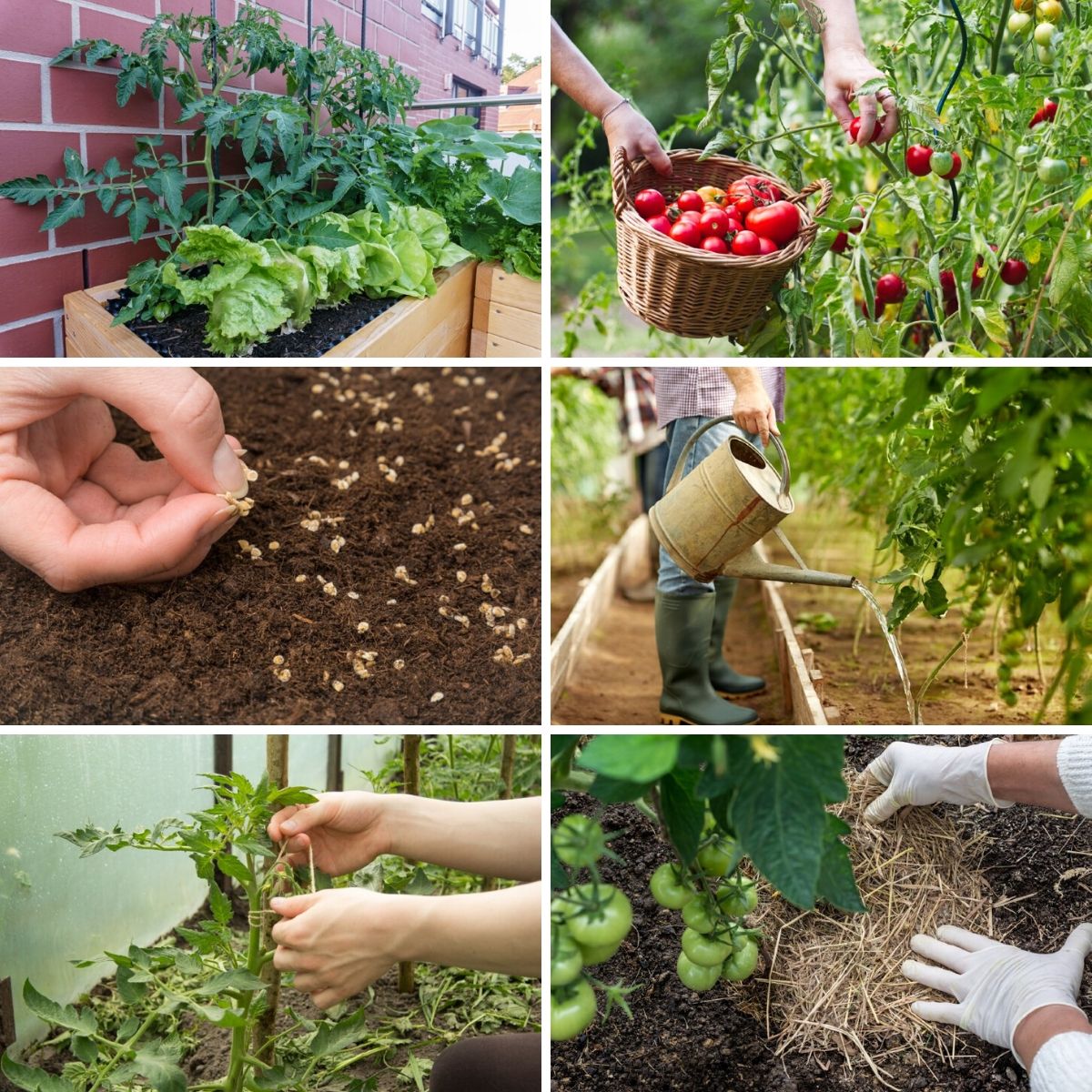
Whether You’re growing tomatoes on a patio or a sprawling two-acre plot, these vegetables – or are they fruits? – epitomize the beauty and bounty of the summer season.
Although tomatoes are not challenging to grow – and they can be quite productive, too! – there are some common pitfalls you might encounter while raising your plants. Luckily, most of these tomatoes.
If you’re growing tomatoes for the first or fiftieth time, you should make it a point to avoid these 15 common tomato gardening mistakes.
15 Tomato Gardening Mistakes
1. Not Choosing the Right Variety
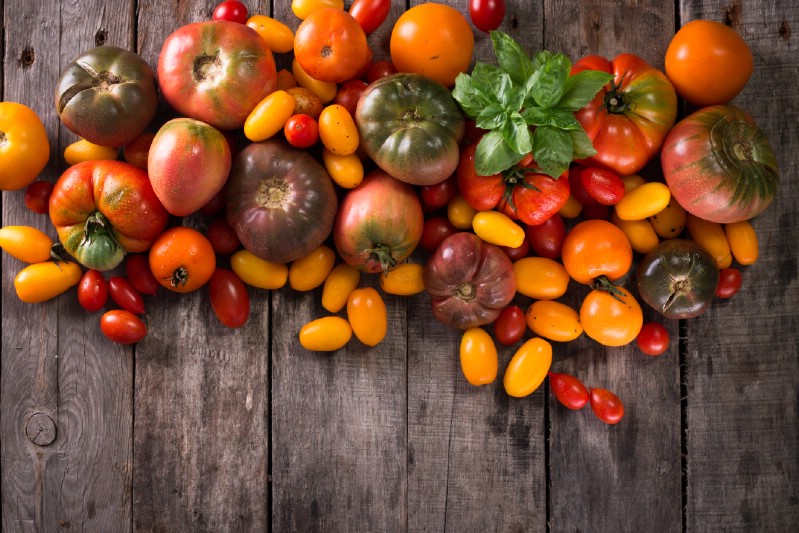
The first tomato growing mistake starts before you even get your plants in the ground – picking the wrong varieties.
You should think carefully about your preferences, climate, soil, and growing conditions before you purchase tomato seeds or plants. For example, if you grow heirloom tomatoes, you’ll be able to save the seeds from this year’s crop for next year’s growth.
Perhaps that doesn’t matter, but the type of tomato does. If you grow lots of cherry tomatoes but plan to make tomato sauce, you aren’t going to have a lot of success. Similarly, you’re going to want to consider the growing habit of the tomatoes (whether they are determinate or indeterminate), their vining abilities, and their time to harvest.
2. Starting Tomatoes from Seed

There’s nothing wrong with starting tomatoes from seed – and this is not a mistake in itself. However, doing so improperly is a major misstep that many tomato growers make.
When you start tomatoes from seed, you need to make sure you create the optimal conditions for seed germination.
Most tomatoes need minimum temperatures of around 40 degrees to germinate – but the best conditions are when soil temperatures hover between 60 and 85 degrees. That’s why most people start tomato plants indoors, instead of outside.
Most climates, unfortunately, just don’t have long enough summer growing seasons to support tomatoes for the long duration that they need. In a short growing season, you need to start your tomato seeds indoors in the late winter or early spring, then transplant them once the danger of first has passed.
3. Failing to Harden Them Off

Hardening off your plants is critical. You need to make sure you give your plants the time they need to develop the defenses necessary for outdoor living.
Hardening off involves acclimating your plants to outdoor conditions. Ideally, this is done over a period of one to two weeks, with more time spent outside each day during this period.
Transplant your tomatoes without hardening them off, and you’ll likely find that they experience stunted growth or are killed entirely.
4. Planting Too Soon
Just as you need to avoid planting tomatoes too late, you also need to avoid planting them too soon. It can be tempting to plant as soon as you experience that first warm, sunny day – however, this could spell disaster!
Wait to transplant until the final danger of frost has passed, even if it seems as though that day is taking forever to arrive.
5. Growing in the Wrong Spot

Make sure you take some time to research the best possible location for your tomatoes. Tomatoes like a lot of sun – ideally full sun for the entire day – and plenty of moisture. Don’t grow your tomatoes in a neglected, damp, and shady spot behind the house. You need to make sure your tomatoes are right out in full view!
And if you grow in containers, remember that your site selection is equally as important. You need containers that are large enough to accommodate your full-grown plants (and not just your plants when they are in their juvenile stages).
6. Not Pruning or Supporting Your Plants
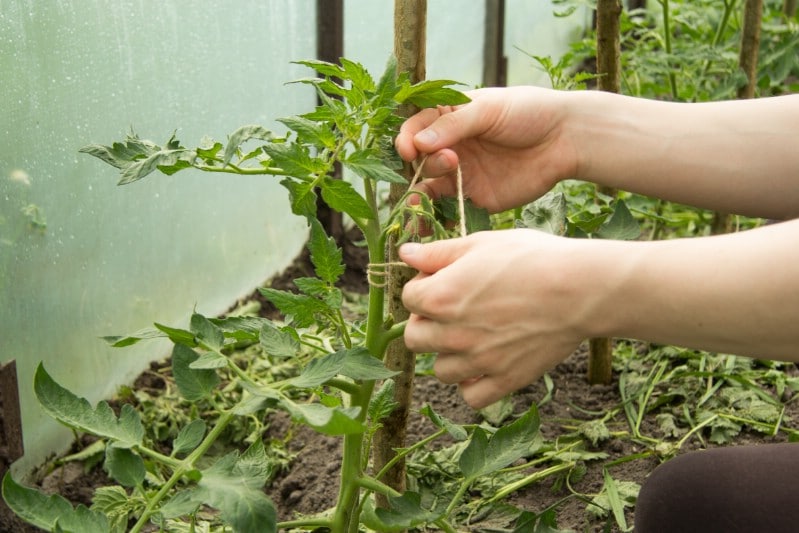
Tomatoes aren’t finicky plants by any means, but they do require some support in order to grow healthy, productive amounts of fruit. There are some cultivars of tomatoes that are self-supporting, but most of the time, you will need to stake or cage them to give them some structure as they become bushier – and weighed down with those juicy tomatoes!
Pruning can also improve the health of your plants (and it will give you less foliage that you need to stake up, too). This should be done periodically and regularly throughout the growing season to improve the health of your plants.
7. Watering Incorrectly
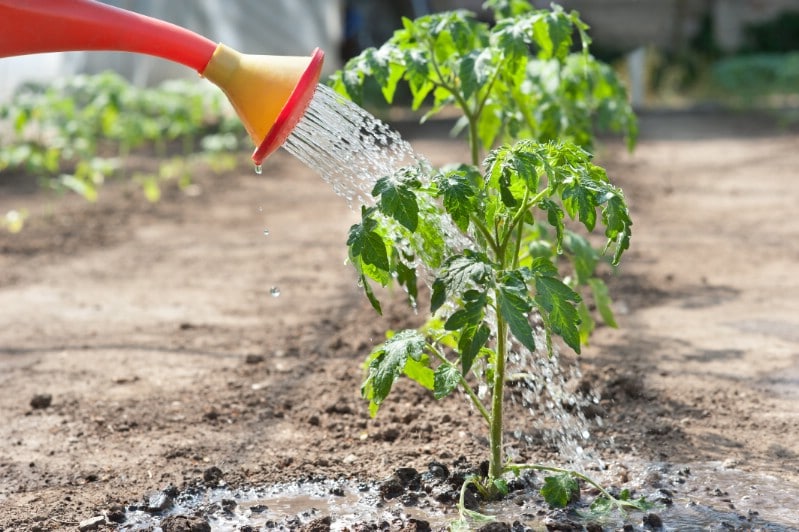
Want to kill your tomato plants pretty much as soon as they’re in the ground? Stop watering them.
Of course, nobody wants that. But it’s important to keep in mind the unique watering requirements of your tomatoes. You need to make sure they get enough -but not too much – water at all times during the growing season. Water is most critical during fruiting and flowering, but it’s vital at all times. And too much water while your plants are fruiting can cause them to split – or it can spread disease.
To avoid problems related to over- or under-watering, water first thing in the morning and water at the base of the plants. Try not to get any water on the fruits or foliage.
8. Failing to Mulch
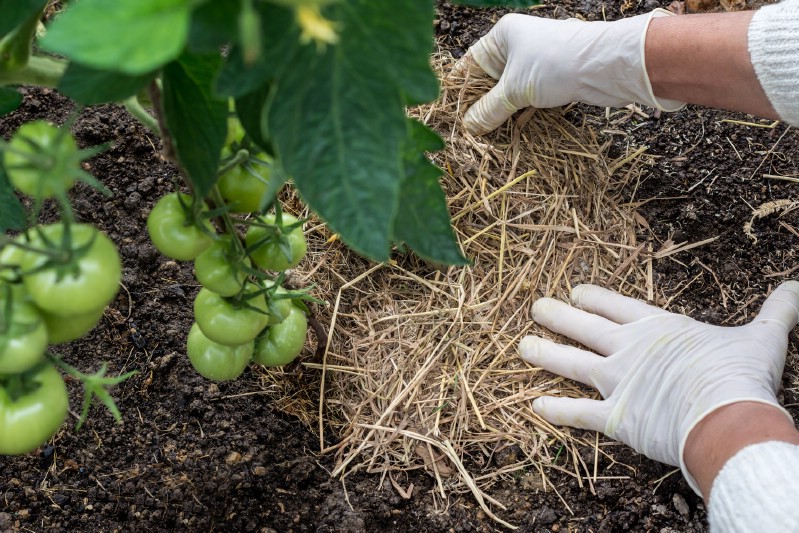
If you’re having trouble keeping track of your tomato plants’ watering needs, mulch may be the savior you are looking for. Adding mulch can improve your yields and help you get the best possible results when it comes to growing tomatoes.
Most mulches act as slow-release fertilizers, helping to add nutrients to the soil gradually while also building soil and retaining moisture. They can suppress weeds and prevent erosion, too.
9. Ignoring Nutrient Needs
Make sure you fertilize your tomato plants! Tomatoes are heavy feeders and will need some supplemental fertilizer during the growing period. They are especially “hungry” when they are fruiting and flowering. Not fertilizing tomatoes can dramatically reduce your yield, so make sure you take the time to fertilize.
You don’t have to rely on synthetic fertilizer, either. Organic compost or compost tea are both great solutions when it comes to fertilizing your tomatoes in an eco-friendly way. Just make sure you use a nitrogen-heavy fertilizer early in the growing season but one that is a bit lighter in nitrogen later on, as your plants are trying to set fruit.
10. Neglecting Green Tomatoes
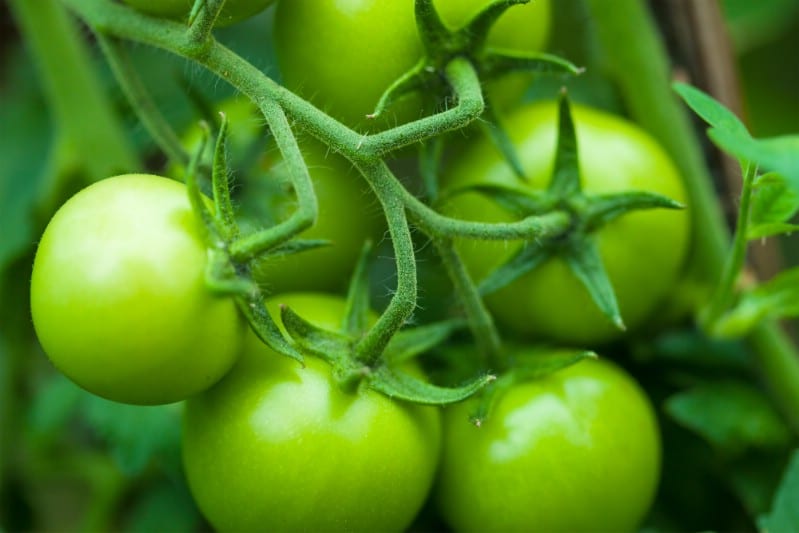
Fried green tomatoes are delicious, but the reality is that most people would prefer to have ripe tomatoes on the dinner table instead. Therefore, you should be careful about how you deal with green tomatoes, particularly late in the growing season.
As the summer inches to an end, take the time to top your tomato plants about 30 days before the first expected frost. This will help your plants focus their energy on ripening the fruits they have already set, rather than pushing out new ones.
11. Watering From Above

When you water your tomato plants, try to do so from the bottom only. If you can install a drip irrigation system, that’s all the better, as this will supply a slow and steady release of nutrients to your plants at their roots. Whatever the case may be, don’t water from above, as this can encourage the spread of fungal diseases.
12. Adding Too Much Nitrogen
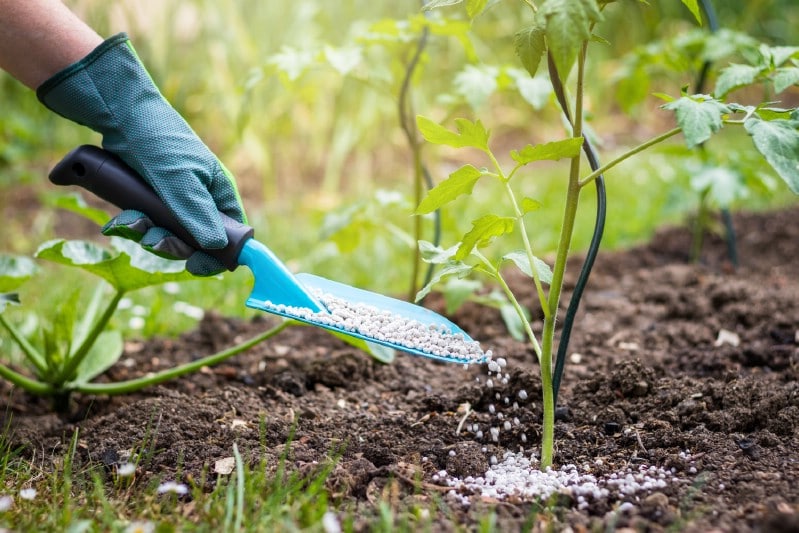
Wait, what? Didn’t you tell me that my tomato plants need nitrogen?
Well, they do – to a certain extent. Tomato plants need nitrogen when they are first developing their foliage. However, as your tomatoes begin to set fruit, too much nitrogen can result in an overgrowth of dense foliage and leaves. This not only compromises your fruit production but can also attract insect pests. Instead, switch to a lower nitrogen fertilizer later in the season.
13. Overcrowding Yoru Plants
While pruning and proper watering can help some, it’s important that you avoid overcrowding your tomato plants. They need lots of elbow room! Don’t squeeze too many into a small space. Instead, follow the spacing guidelines listed for your specific type of tomato plants.
14. Ignoring Companion Plants

If you’ve been growing tomatoes for several years, you may want to consider the power of companion plants. Sure, you can grow tomatoes without companions – but like everyone, tomatoes like having a few friends around!
Consider growing tomatoes with plants like basil, borage, nasturtiums, and marigolds – and street clear of plants like peppers and eggplant (which are prone to the same pests and diseases). When you plant tomatoes with the right companions, you’ll have fewer pest and disease issues to worry about. Learn other companion planting pairs for a more space-savvy gardening experience.
15. Wasting Your Tomatoes

This is one of the most common tomatoes growing mistakes, and it’s so easy to avoid! Don’t waste your tomatoes – even though you might feel inundated with the juicy red fruits at the end of the growing season, there are always people who will happily take them off your hands.
Consider donating extra tomatoes to neighbors, friends, or family – or see if the local food pantry will accept homegrown produce.
Plus, there are so many ways to store tomatoes for long term use, there’s no reason not to hang on to them. From canning to freezing and even making preserves, the uses for tomatoes are endless – do your best to make the most of the harvest in whatever way makes the most sense to you. You might want to check out our ultimate tomato gardening post if you’re new to growing tomatoes.
And trust us, when you are able to avoid these common tomato growing mistakes, you’ll have more tomatoes than you know what to do with!
Related Content
This post was first published here


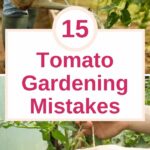

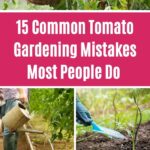
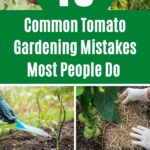

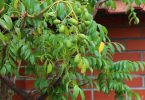


Leave a Comment
You have to login first to post a comment. You can register if you have no account yet.